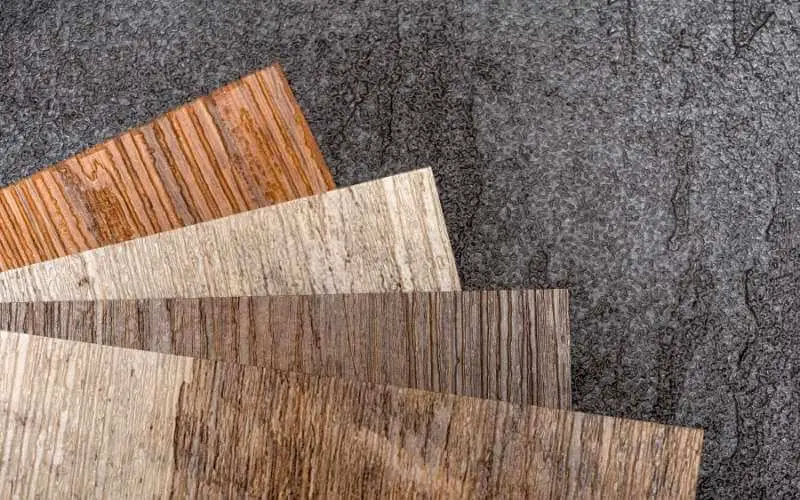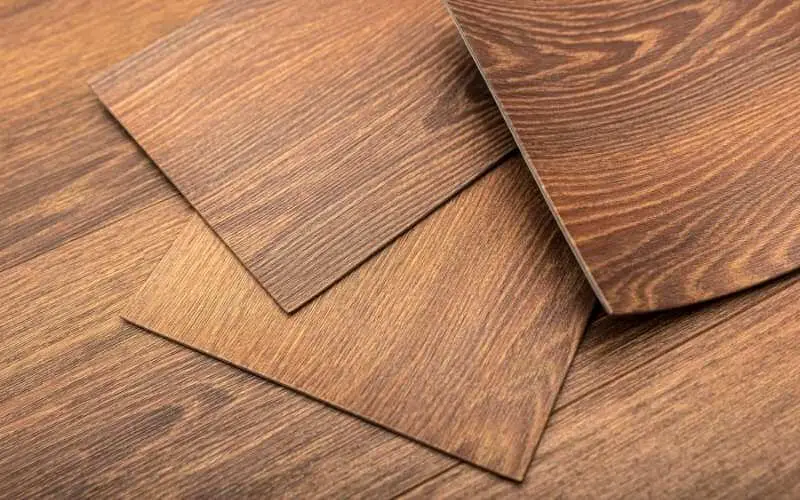Vinyl flooring seems like all the same in the flooring world now and for good reason. It is one of the most affordable flooring options with that easy to clean and maintain nature. Don’t forget about the breathtaking appearance also.
So, we cannot fault the current high demand and questions from people who want to get their facts right before purchasing and installing vinyl flooring.
So, does Vinyl flooring expand and contract? The answer is yes! Vinyl reacts to high or low temperatures making them contract and expand at different periods.
To make this big decision about new flooring, you need to take a look at the pros and cons, which is why we are here.
We’re yet to decide if this particular feature which is the focus of this article is a pro or a con but let’s take a look at some confirmed pros and cons before we dive in to answer the questions in your mind.
Related: Is Vinyl Flooring Good Or Bad?
Pros and Cons of Vinyl Flooring
Table of Contents
There are different types of vinyl flooring ranging from Luxury Vinyl Plank (LVP) to Wood Polymer Composite (WPC), then Stone Polymer Core (SPC).
The LVP is glued to the ground while the SPC and WPC are called “floating” as they stay bound by interlocking a d not glue. Though they are different, they have very similar pros and cons.
Pros of Vinyl Flooring
- It is cost-effective
- It is durable
- It is water-resistant
- It is anti-scuff and scratch
- It has numerous designs to choose from
The Cons of Vinyl Flooring
- Some variants are difficult to install
- It is affected by temperature fluctuations
- Some people prefer real hardwood
Now that we see clearly the pros and cons, we see that the expansion and contraction come from the temperature fluctuations.
Does Vinyl Flooring Expand and Contract?
The answer is a big, yes! We are talking of vinyl-made substances here and vinyl reacts to high or low temperatures.
This is why we talk about the expansion gap. A gap must be left between floating vinyl flooring and the wall, another floor, or any other vertical surface, to give it room to expand when needed. If this isn’t in place, then buckling is in view.
How Does an Expansion Gap Look?
The expansion gaps are usually 5/16” between the end of the vinyl plank and the adjacent obstructing object.
To keep everything looking seamless, a piece of trim molding is put in between. In some areas, it is difficult to install trim molding as the adjoining object is a metal surface.
In this case, a bit of color-coordinated silicone caulk is used. This way, the gap is filled and whenever the plank needs to expand, it can.
What Causes Expansion in Vinyl Flooring
The short answer is temperature. When installing vinyl flooring, you must keep in mind this little detail and install it in a room with minimal temperature changes if any at all.
Even minimal, normal changes in temperature can affect it over time. For the floating kind of vinyl flooring, the extreme temperature has a much worse effect.
The range of temperature suitable for vinyl to thrive is between 65°F and 80°F. This also implies heating systems that are indoors and close to the floor have to be watched also.
For this, it shouldn’t go past 85°F. Some heating systems are on the floor and the same goes for them too
Also, areas affected by direct sunlight shouldn’t cross your mind when you’re thinking of where to install your vinyl planks. Sunlight also affects vinyl flooring.
This has an easy fix though, the window over those areas should be covered with window blinds during hours of the day when the sun shines brightest. You’ll need to protect that area from sunshine most time.
Up to this point we’ve known about temperature, now let us know a little more about the little gap that keeps our LVP from buckling.
Read: Pros and Cons of Vinyl Flooring On Stairs
Expansion Gaps to the Rescue
Most homeowners will rather not have gaps in their flooring but that’s why this conversation is important. More people are getting on board the gap train.
It is the very obvious decision of gap versus buckled or lifted flooring that does it eventually. The floating floors need to have space where they expand and contract as they can come up against any immovable obstruction at any time.
This is why expansion gaps are advised to be around the perimeter of the vinyl floor whenever there is a vertical, immovable object in the way. We can call the gaps the superheroes of the floating vinyl flooring story
Vinyl Plank Temperature Range
Asides from temperature increase affecting it, there is also an issue with very low temperatures. At times like this, the planks contract. This is why vinyl is not recommended for extremely cold climates.
If the cold is intense and there is space for expansion, the glue holding down the planks begins to crack. A cracking, it will be unable to hold up so the planks can lift.
The recommended low-temperature limit is 65° F. You can also put an eye on the humidity as it is specified to be between 30-70% RH.
Does Glued Down Vinyl Expand?
Glued-down vinyl flooring like LVP is also affected by temperature since it’s glued down. The movement is limited.
This is why it is better to put LVP in rooms where the temperature fluctuates rather than SPC or WPC which are floating floors and can buckle.
However, even though it is glued down, after some time, the floor can rise as the is no room for it to expand and it is glued to the floor.
Read: How to Remove Vinyl Flooring Without Damaging It
Conclusion
We’ve shown you that vinyl flooring does expand and contract. However, prevention is better than cure so we’ve also shown you the things to do to prevent buckling and cracking when it does.
There are some tips that if effectively put in place, you’ll enjoy your vinyl flooring for a long time.
We wrote this article about does vinyl flooring expand and contract to help give you guidance when faced with making a choice about vinyl floorings.
We hope you found it helpful and informative. If you did, please share it across your entire social media pages.

